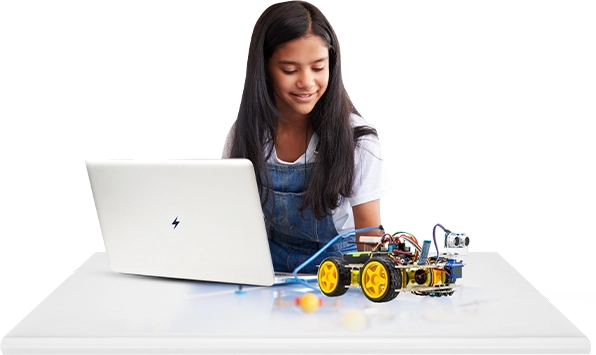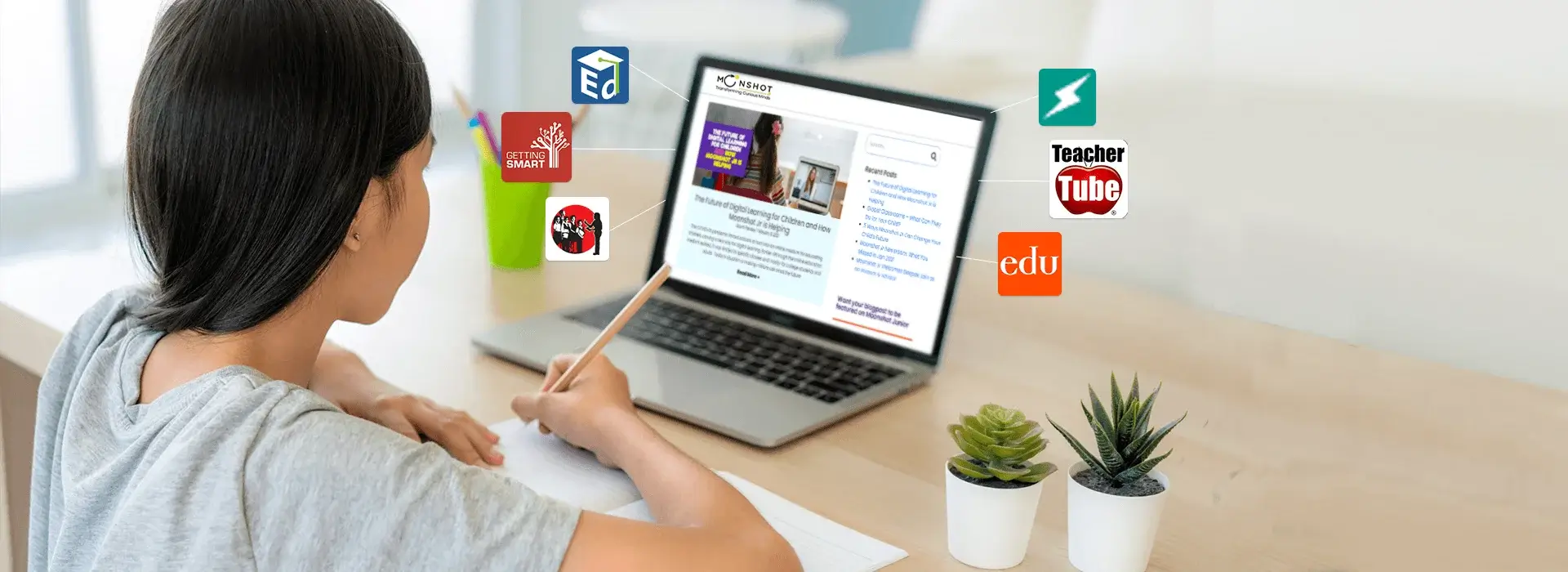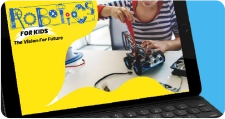
Moonpreneur
Update: This article was last updated on 23rd Aug 2023 to reflect the accuracy and up-to-date information on the page.
Fiction is fascinating. The imagination of fiction writers is even more fascinating. Their spellbinding imagination wanders into uncharted territory, generating novel features that infuse excitement and intrigue to their narratives. According to a study in neuroscience, reading literary fiction helps people develop empathy, theory of mind, and critical thinking.
No wonder, visionary science fiction writer Isaac Asimov’s fictitious Three Laws of Robotics in the mid-20th century have transcended the realm of story books. Today they are profoundly impacting the world of technology.
Designed as ethical guidelines, these laws summarize the moral obligations that robots with artificial intelligence, should adhere to when interacting with humans. Even though these rules were first thought up in stories, they go beyond that and hold profound implications for the rapidly advancing field of robotics today.
3 LAWS OF ROBOTICS
| First Law | A Robot may not injure a human being, or, through inaction, allow a human being to come to harm. |
| Second Law | A Robot must obey orders given to it by human beings, except where such orders would conflict with the First Law. |
| Third Law | ARobot must protect its own existence as long as such protection does not conflict with the First or Second Law. |
| DID YOU KNOW? | |
|---|---|
| In 1942, the Boston University Biochemistry professor introduced Asimov's robotics laws via "Runaround." Unlike scientific laws, these directives safeguarded fictional robots from malfunctioning. A visionary leap that reshaped AI ethics. |
These laws are designed to be part of Asimov’s observation and thinking about what the makeup of a robot’s inherent nature should be like – it is vital to note that these are not hard and fast universally and scientifically stated laws, as these are the rules that any human should follow when building tools to ensure safety.
In this article, we’ll try to get a closer look at Asimov’s Asimov’s Three Laws mentioned in the Handbook of Robotics, 56th Edition.
FIRST LAW OF ROBOTICS
| A robot may not injure a human being or, through inaction, allow a human being to come to harm. | |
| At the heart of the Three Laws lies the primary duty of robots to safeguard human life. This principle reminds us of the trust we place in robots, granting them the power to assist, collaborate, and serve. | |
| As robotics enter industries like healthcare, manufacturing, and even personal assistance, the First Law becomes paramount. | |
| A surgeon's assistant, an autonomous vehicle, or a household companion—each must honor this pledge to protect, building a strong base for humans and robots to live together peacefully. |
SECOND LAW OF ROBOTICS
| A robot must obey the orders given to it by human beings except where such orders would conflict with the First Law. | |
| The Second Law shows how robots and humans interact in a tricky way—their freedom to make choices versus following commands. As robots get smarter, we worry about what they should be allowed to decide. How much power is okay for them? | |
| This rule also says that while people need to be in charge, robots can also do things on their own without risking our safety. It's like a careful balance between us telling them what to do and them figuring things out by themselves. | |
| It teaches us that finding the right mix of human control and robot smarts is like a graceful dance. We want them to help us with their skills, but we also want to make sure we're always safe. |
THIRD LAW OF ROBOTICS
| A robot must protect its existence as long as such protection does not conflict with the First or Second Laws. | |
| As we imagine a future with smart machines, the Third Law shows how much we want to stay safe. Robots need a way to protect themselves too, like how animals try to survive. | |
| This rule is about robots making sure they stay working, like saving their own data. But, this can't be more important than keeping people safe or doing what's right. | |
| The Third Law also tells us that humans and robots help each other out. Robots assist us, and we make sure they stay in good shape. It's like a give-and-take relationship that's fair for both. |
What is the purpose of the three laws of robotics?
A set of ethical guidelines for the behavior of robots, the laws ensure safe and responsible use of robots in society. These regulations provide a framework to protect people’s safety and welfare when they engage with robots.
The primary goals of the laws are:
- Human Safety
- Obedience to Humans
- Balance with Self-Preservation:
The three laws are fictional concepts and are not used in the design or programming of actual robots. However, their principles continue to inspire discussions and debates about the ethics of AI and robotics.
Why are the three laws of robotics essential to us?
They are essential for several reasons:
- Ethical Considerations: The laws provide a framework for considering the ethical implications of AI and robotics. They raise questions about the responsibilities and obligations of robots towards humans and encourage discussions about how to ensure these technologies’ safe and responsible use. Following these rules encourages responsibility and aids in preventing robotics abuse or misuse.
- Coexistence with Technology: As robots become more integrated into our daily lives, it is crucial to establish guidelines that ensure harmonious coexistence between humans and machines. The Three Laws provide a foundation for creating a future where technology serves us while respecting our values, rights, and well-being.
- Inspiration for Future Developments: The three laws have inspired researchers and engineers to consider AI and robotics’s ethical implications and develop new technologies aligned with these ethical principles.
- Decision-Making and Accountability: The laws consider how difficult it is for robots to decide between competing options. They emphasize how crucial it is to consider robotic actions’ broader effects and moral implications. By requiring robots to abide by these standards, we urge designers, programmers, and manufacturers to make morally responsible decisions.
- Cultural Significance: The three laws have become an iconic part of popular culture and are widely recognized as a critical science fiction aspect. They have influenced popular perceptions of AI and robotics and continue to shape the public’s understanding of these technologies.
The science world knows that Asimov’s laws are not binding but are essential to include during development and experimentation, especially in the present age of Artificial Intelligence.
So, we can say the three laws of robotics are important because they raise important ethical questions, inspire new technological developments, and provide a cultural touchstone for discussions about AI and robotics.
Moonpreneur is on a mission to educate and ignite the flames of entrepreneurship through our holistically created online STEM programs, which will help kids master the futuristic sciences such as Robotics, Game Development, App Development, Advanced Math, and much more!!
Register for a free 60-minute robotics workshop today!
















Are the 3 Laws of Robotics sufficient for ethical AI?
Asimov’s Laws provide a starting point, however, contemporary discussions on ethical AI encompass a wider array of topics. Ethical principles now include transparency, accountability, justice, and the prevention of bias in AI systems, extending beyond the scope of the initial 3 Laws.
Exist applications of the Three Laws of Robotics in the actual world?
While not directly equivalent, ethical standards like the IEEE Standards for Artificial Intelligence (IEEE) and the EU’s Ethical Guidelines for Trustworthy Artificial Intelligence (EU-TIG) aim to promote responsible development and use of AI technologies, including principles of transparency, accountability and privacy.
Can sophisticated AI-powered robots stray from their original programming?
AI systems in the real world work based on what’s programmed into them and what data they’re given. But sometimes they’ll do something different because of a bug in the program, something wrong with the data, or something unexpected. It’s important to keep an eye on them, keep them updated, and think about what’s right and wrong.
Are the possible human misuse of robots covered by the 3 Laws?
Basically, Asimov’s laws revolve around how robots behave. To keep robots from being abused, there are laws and regulations in place, as well as cybersecurity and AI development practices to make sure no one can get their hands on them.